Posts Tagged: Family
Effie in the Waiting Room
I took my mother to her annual checkup at Kaiser. I always take the opportunity to photograph her. It took a half-dozen shots before I got her to smile even this much. It is not that she is sad. She’s not. She’s actually in pretty good spirits. But her relaxed face is not s smile.
The Sugar Bowl
Just over two and half years ago, I moved my mom out of her apartment nearby, and into a board and care facility. As I prepared to move everything out of the apartment, I decided I would photograph everything in it. Every thing. I did. The aim was to document all the objects which held some significance before casting anything to oblivion. Actually, it was to document everything and figure out later what has significance. The truth of the matter is that every single thing did. That’s just how I am.
There were just a few things I missed because they were not in the apartment at the time. A sugar bowl had been in use at my house for a couple years. It was my parents’, probably my father’s from before his marriage to my mother, and I remember it from early childhood. It wasn’t until I was an adult that I learned what depression glass is, or that it is somewhat collectible.
A month or two after I had completed the documentation project, I decided to photograph the few things that were scattered around my house. The sugar bowl was in heavy use near the stove. I thought to wash it before photographing it. That’s when I dropped it in the sink and broke it, and my heart. Though broken, I decided I would still photograph it, but I didn’t do it then. I was too disappointed at the time. I finished washing it and put it up on the shelf above the stove for later. Two and half years later, I’ve finally got it over with so that I can now,… cast it into oblivion.
Everyone’s Dead
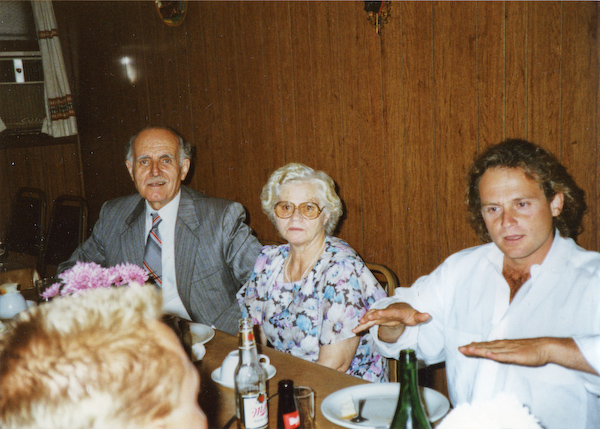
Tommy and Parents
That’s a terribly morbid title for a blog post, and I don’t really mean to be morbid. But it just struck me that everyone in this picture is gone now. My Thea Sophia passed away from cancer in about 2002. Then her boy, Tommy killed himself in 2008. Then my Uncle Peter, Theo Pano, passed away a year ago. So now it is just Tommy’s sister, Aglaia, and their brother George, who has down’s syndrome.
Today is Tommy’s birthday. He would be 54 years old. It has been over three years since he passed away, and I still miss him. A lot. And I still feel guilty and think about what more I should have done to try to prevent such a thing from happening. It’s not like a think about it all the time. But when I do think of it, it’s the same ton bricks it was when I first got the phone call. Why didn’t I take his melodramatic pronouncements more seriously? Why wasn’t I more insistent about what was not his business to worry about? I know that there’s no answering such questions.
Sometimes I think about these things I’ll never have again, or the people I”ll never see or hug again. It is like each loss is a loss of a little part of my own self, my history, my story, my being. Of course, the life process goes on incorporating new things into the story, making new meanings from our of day-t0-day lives. But these just get us by. Their deeper value now lies in their being the raw material of certain other’s lives, of the next generation. Children live in the present; they burn right through it. So, there is no way to see at this moment how this present is being incorporated into the memories that will form their consciousness. But it is happening. And someday, 30 years from now, my son may wonder in turn about how to hold to what’s left of the people and things that are his story, his memory. I only hope he has fewer regrets.
Old Armenian Town
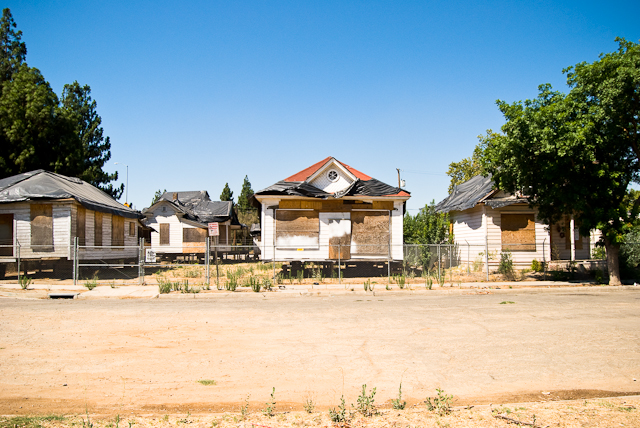
This is about all that's left of a once substantial Armenian neighborhood in downtown fresno.
Each time I visit my hometown, I feel a little more sad nostalgia for the once-vibrant downtown. My parents lived in one of the old residential neighborhoods in downtown when I was born. I’m not sure our house on S St. was officially within the area now referred to as Old Armenian Town, but we had many Armenian neighbors, which was fine for our Greek immigrant family.
Of course, as a teenager and even young adult, I didn’t think much about the neighborhood in which I spent my toddlerhood. But a few years later when it dawned on me that it would be really nice to see the street (or even the house!) in which we lived, I was sadly disappointed to find that not only was the house gone, several blocks of S St. no long existed, having been turned into medical office complexes around nearby Fresno Community Hospital (where I was born). Even some of this is now gone and replaced with a disappointing-looking condo complex. Still, about every third or fourth visit to Fresno, I would drive down there and wander the streets hoping I would discover some hidden fragment of S St. that would be a little time capsule, an example of what it was all once like, an indication of where I came from. Eventually, I sort of, well, got over it.
Two years ago, however, I got worked up again when I learned that the City had approved (re)development plans for what sounded like a cheese-ball commercial project to commemorate Old Armenian Town, called, oddly enough, “Old Armenian Town.” They demolished the last of the former Armenian neighborhood, saved three or four small houses, and moved them over to an empty field directly next to the elevated freeway, where, I guess, they would be “on display.” There they have been on display ever since, up on blocks and surrounded by chain link and barbed wire, disintegrating in the Fresno summer. Links to an alleged page about the “Old Armenian Town” on the Fresno Redevelopment Agency web site return “page not found” and no mention of this “major commercial development” is made anywhere I could find on the site. This is no surprise. Counting the number of empty lots around Fresno where historic buildings once stood but now mark the sites of developments that stalled after the demolition phase is a lengthy, tedious exercise. If anyone knows anything more about the project, leave a note. I’d love to hear something good about it. At this stage, something would be better than nothing, I suppose.
Well, when I started this post, I meant to talk about my little photo walk in the neighborhood just to the south of the Fulton Mall and post some photos. Instead I became distracted by Old Armenian Town. Forgive me for that. I’ll get back to the photo walk shots in a day or so. In the meantime, here’s a couple more shots of the spot, including a nice one of the Sycamore trees I remember all over the neighborhood when I was small.
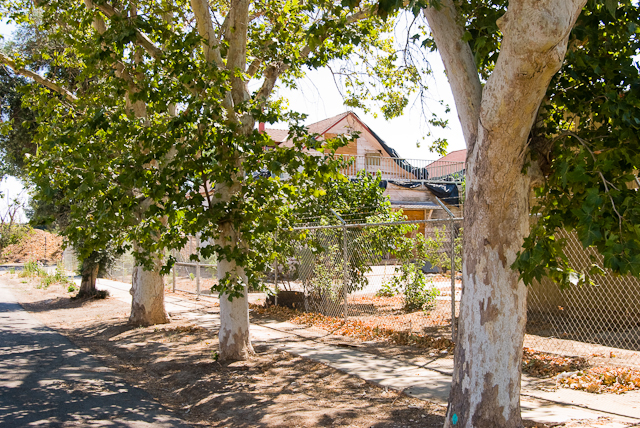
Sycamores in Armenian Town
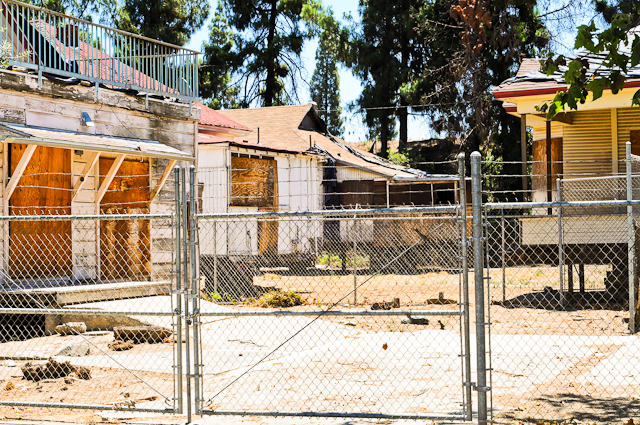
Old Armenian Homes in a museum of decay.
East Harlem Period
Two or three years ago I had a little jag of doing family research on the Web. It can be frustrating because very often, in between you and the information you want there is a lot of noise. And the noise isn’t random; it is designed to get you to pay for what you can usually get for free, or even just to search. My longing for lost youth and family identity has not yet reached the point where I will fork over money. For the time being, I satisfy myself with what can be found with free online searching. One day, I managed to get this little scrap of a scan with my father’s name on it. I have been meaning to do some more digging but never quite get around to it. Yesterday I came across it on my cluttered desktop, and I wondered if this address is still legit. So, naturally I mapped it on Googgle to check out the street view.
When I saw this, I immediately wondered what it might have looked like when my father lived there in 1931. I did some more searching to learn a little about the history of East Harlem. I noticed that right around the corner on 103rd St is St George-St Demetrios Greek Church. From what I can tell from Google street view, the outside it looks like a brick building with something of a byzantine motif. The inside does seem to be more like what one would expect in a Greek church. I wonder how long it has been there. I am quite sure that it wasn’t accidental that my father to settled somewhere near a Greek church or community. But in reading about East Harlem, I found mention primarily of Italians and later, Puerto Ricans, and after that African-Americans. Nothing about Greeks.
There is, however, something coincidental in this. This is the first time I have seen a church named for two saints rather than just one, and both are familiar names. Our church in Fresno was St George Greek Orthodox Church. Whenever I hear the name, I will always think of my parents and their many years of membership there. Sarah and I lived in Seattle for several years, and near us was St Demetrios. And we had dear friends who lived across the street from it. Weird. That’s all, just weird.
Anyway, I eventually had a melancholy train of thought about what it would have been like to sit in front of the computer with my father and show him his old neighborhood on Google maps. Would he be at all impressed? What would he think of being able to see it like that, to be able to travel virtually. I can just see him smiling and letting out a “Holy Toledo”, his eyes mere slits behind his thick glasses. We’d stay up late cruising the streets and searching for places he worked or lived or ate. And he’d tell me some of the same stories I’d heard many times before over the years. Only now I wouldn’t roll my eyes at them. I’d hang on every word.
For Thea Maria
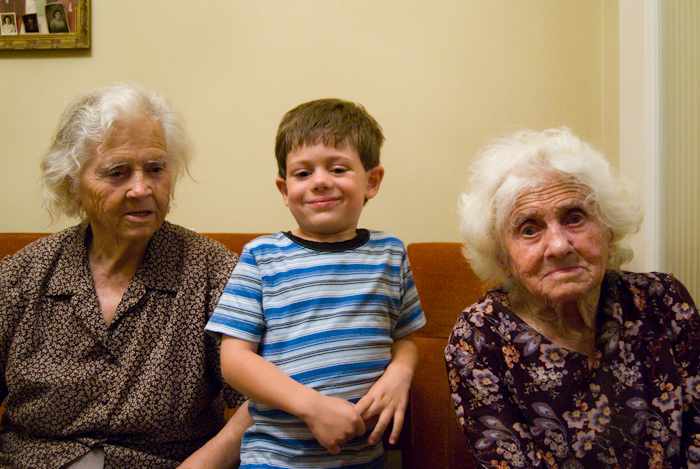
My mother's two sisters, Thea Thespina (left) and Thea Maria (right) on either side of Theophanis when we visited Greece a couple years ago.
My mother’s sister, Thea Maria, died the other day. She was 101 years old and was the oldest of six children, Maria, Thespina, Eleni, Sophia, Efrosini, and George. Yes, five girls and finally a boy.
As their mother died very young, when my mother was only three years old or so, Maria took on helping to raise the other children. My mom told me stories about how hard she worked and how she was often strict with them. She also told me about how, while still a girl, Maria broke her ankle badly. In the hills of the Peloponese back in the 1920’s, there was not great medical care. The villagers set it as best they could and let it heal. But she was considered crippled after that. How crippled? I’m not really sure. What I do know is that she didn’t work in the fields after that, and she didn’t attract a mate. When she died this week, she had been living with her sister Thespina for the better part of 70 years.
They lived together in Thea Thespina’s house in Athens. Uncle George, the baby of the family, had lived around the corner and looked after the sisters. He bought groceries. He fixed things. He drove them to the doctor. He did a lot. He drove them from Athens to the village every summer, and back in the fall. The sisters spent summers in the village of Arbouna, in the family home, the home in which they were all born, until fairly recently. But Uncle George had been too ill to drive everyone around the last few years, and he finally passed away last spring. Neither George nor Thespina had children. As they aged, it fell to their nephew Taki, Thea Eleni’s son, to look after them all. Thea Eleni herself died more than 40 years ago.
Thea Sophia died in 2002. So now it is just Thespina, and my mother, Efrosini. Both have dementia, and my mom is a little worse, I think, though at 91 she is a good five years younger. My mom had a tough year last year, real tough. But she is bouncing back and doing surprising well right now. Who knows, she might have another 10 years in her.
All I know is that I wish I had gone to Greece more, paid closer attention, and knew more about my blood than I do. I suppose there is still time to learn a little more before the last two of the people that connect me to a different world and a different time are gone.
Pin holder
Last year we moved mom to a board and care facility on account of her increasing dementia, and it was while we were emptying out her apartment that I photographed everything in it for my Family Heirloom Project. Among the items was this one: a little ceramic bowl.
I attended kindergarten at Del Mar Elementary School and had Mrs. Kasner. She was an older lady with fiery red hair. I liked her just fine, although she occasionally sent me to the “thinking chair” or, if we were out on the playground, the “thinking step” to think about something I had done. All that thinking; maybe that’s where I picked up the habit that eventually resulted in grad school in philosophy. My cousin Tommy claimed that she once told him he’d never learn to read and that he never got over it.
In any case, we did a lot of art projects in her class. For example, there was lots of finger painting. I still remember the first day when we were told to bring an old shirt of our father’s to wear while painting. We wore them backwards. I still managed to get paint all over myself. One day, we did a ceramics project. I made a small, simple bowl. I remember shaping it with my fingers, over and over again, trying to get it right. I never really succeeded, but eventually got something to hand over to Mrs. Kasner.
So, I made this little bowl, and painted it blue and black. On the bottom was inscribed “Nickie AM”, because I was in the a.m. class. I brought it home and gave it to my mom as a gift. She did a lot of sewing and needed pins to be handy. She was always pinning things up for alterations, or pinning patterns to fabric, and so on. So she kept pins in it. For 40 years or more that thing sat on her sewing machine with pins in it. After we moved my mom, it came to our house and sat on a bookshelf in the office. Without the pins, of course.
Just a few months later I was cleaning up around the side of the house where the trash and recycling bins sit. I saw a little patch of blue on the ground and a wad of neurons jangled in my head. It was so familiar. I picked up a little chard, then another and another. My heart sank.
What one kindergartener made, another demolished. (I know, it’s a metaphor for a natural process all children and their parents go through.) I don’t know exactly what happened, and never will, I’m sure. Somehow Theo got ahold of the bowl and it became a play thing, until it broke. I have to admit that at first I was pretty mad. But when i looked into that sad, confused little boy’s face, I knew I had to just let it go. I might have gone a long time, maybe forever, never thinking about that little bowl. I don’t know what I would have done with it anyway, other than allow it to be another piece of baggage to carry around the rest of my life and eventually leave to someone with no personal connection or emotional attachment, and hence free to take it to the Goodwill with all the other old crap. So, that came sooner in this case. I didn’t have to carry it around another 40 years. Still, I can’t help feeling a little loss, not of material wealth, but of a piece of the story—a little hole, just like the growing gaps in mom’s memory.
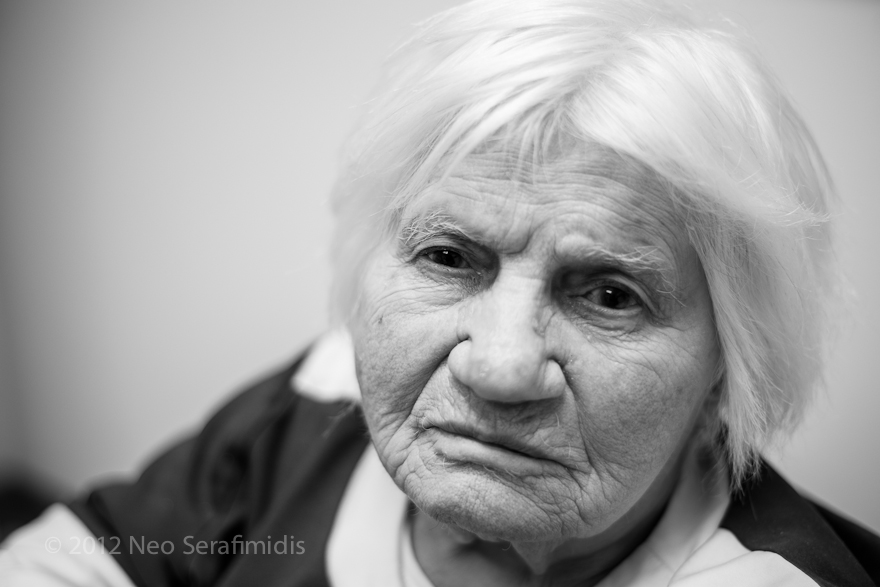
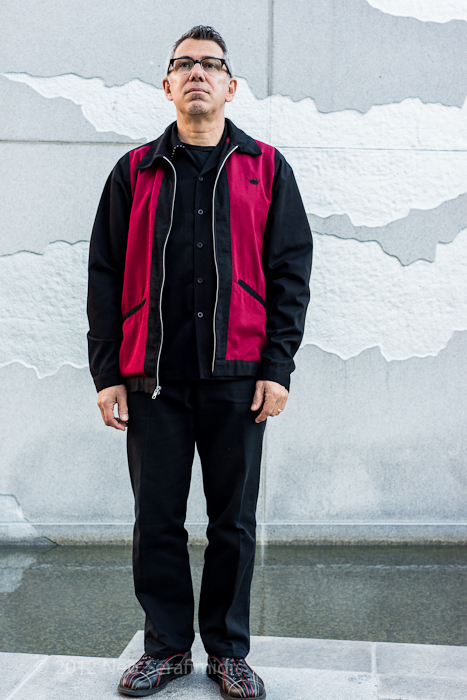
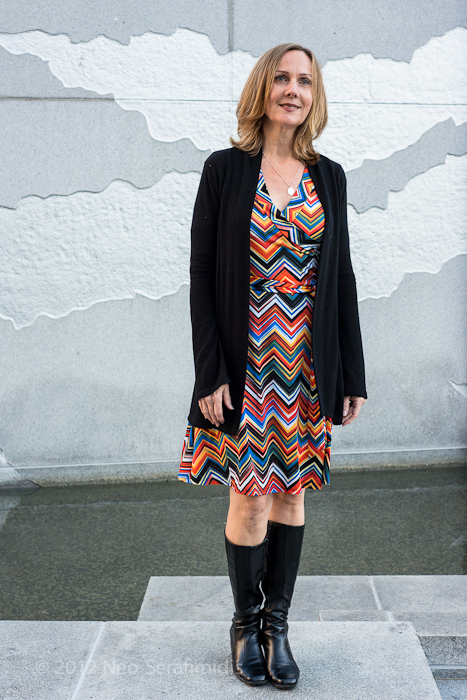
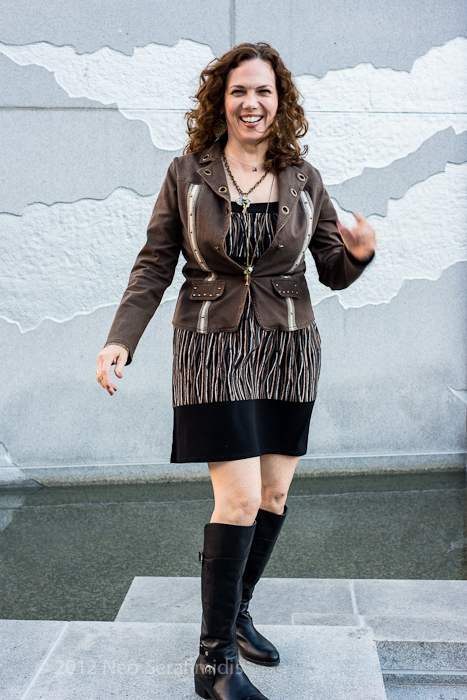
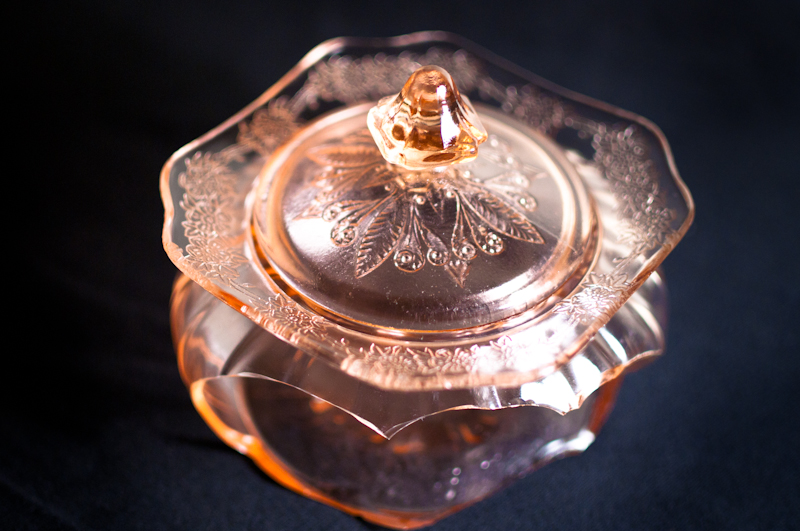
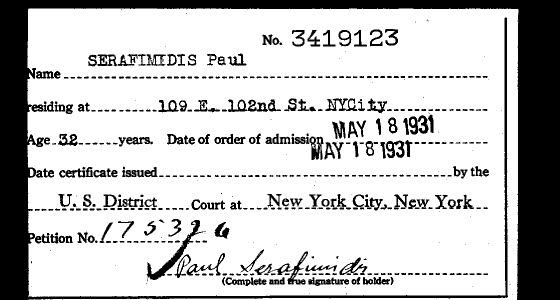
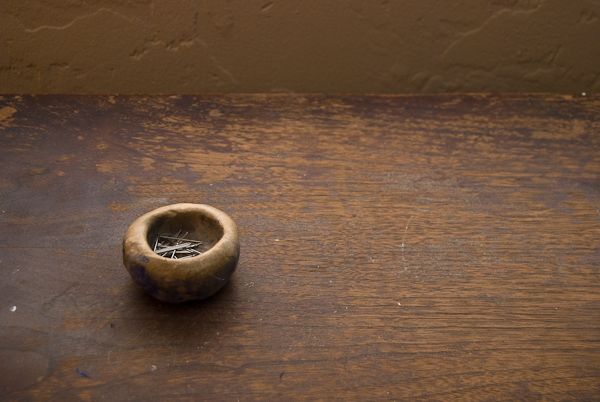
You must be logged in to post a comment.